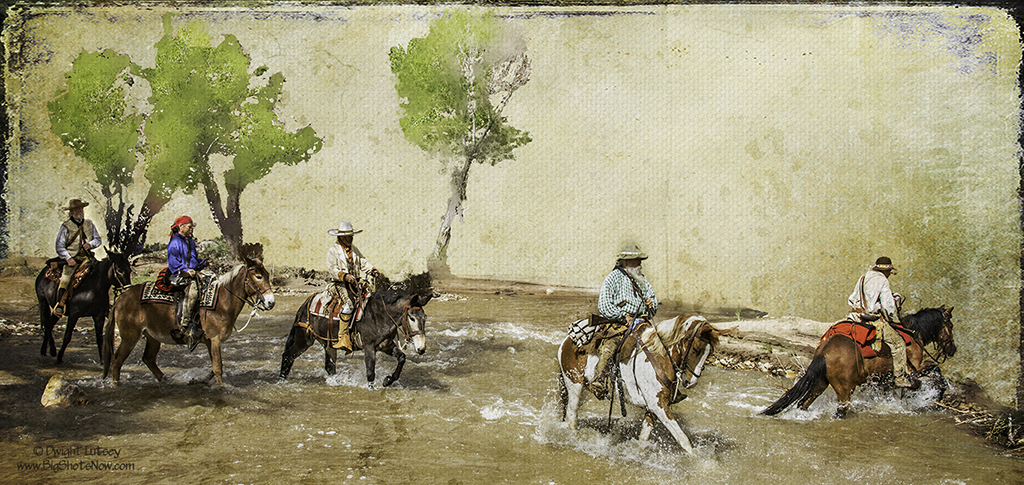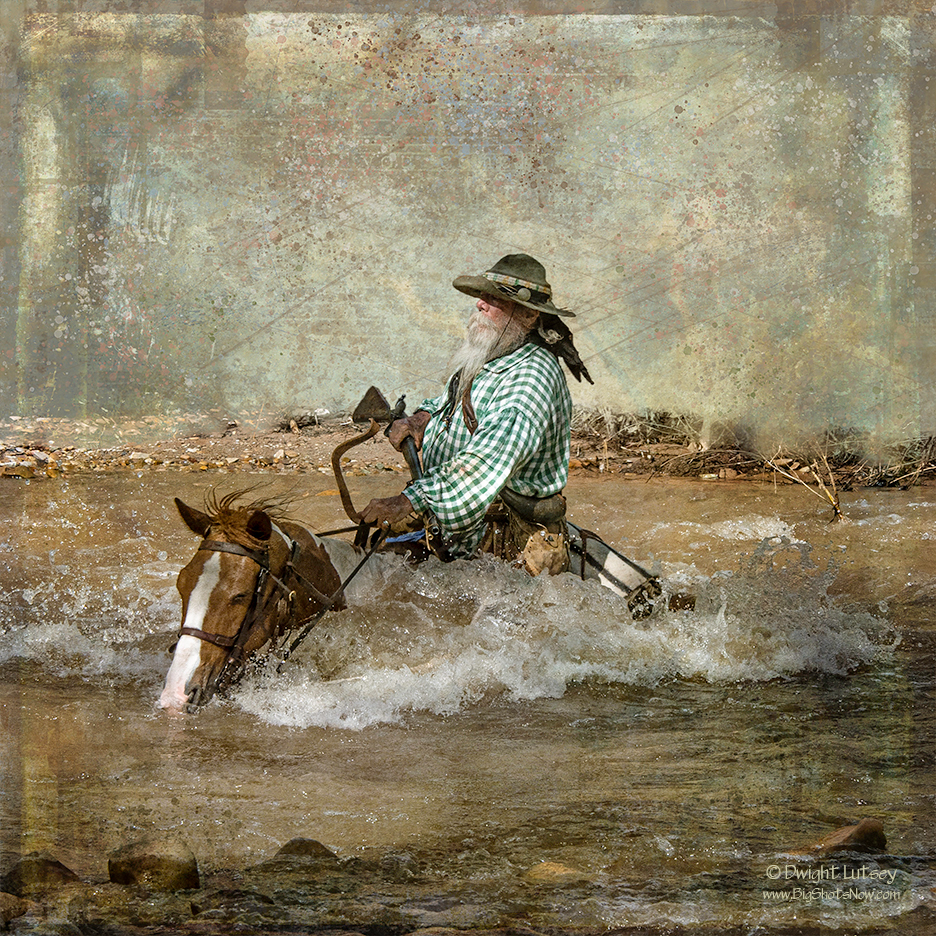
Crossing a Western creek can appear to be deceptively easy. After all it looks like it’s only hoof deep in most parts, and for the most part it is as seen in the image above. But note too how dark brown the water is from the silt being carried down stream. In places you cannot see the bottom due to the cloudiness of the water.
Also know that the creek can widen out and fill very quickly if it rains up stream or during the spring runoff. Its meandering course also causes deep holes to occur near sharp corners where the bank juts out into the stream and near and around large rocks in the streambed. These holes can be deep enough to swallow a horse and rider up to the saddle or higher.
Granted given the normal shallowness of the creekbed it’s unlikely to be that dangerous if you got throwed or worse yet, fell in, it’s unlikely that your companions would let you forget that for awhile, but the loss of a good Hawkins and the rest of the gear being carried can ruin your whole day. For example, right behind the rider on the paint horse the bank juts out into the river in the image above. Just off that point there is a deep hole that nearly swallowed that horse and rider when the horse accidentally stepped into it. See the image below.

Whenever a river or creek crossing was necessary it was never taken for granted despite what you might in see in the movies. The routine to follow to have a safe crossing was to have one fellow who hopefully knew the crossing or was more experienced in fording would start out and the others, in single file, would carefully follow his lead. If the fellow ahead of you suddenly disappeared and all you saw were bubbles it was prudent to halt and backtrack to the bank behind you. If that didn’t happen then you continued across like you had good sense. That usually was the most successful way to make it across, and anytime you could win one it was a good day.

You must be logged in to post a comment.